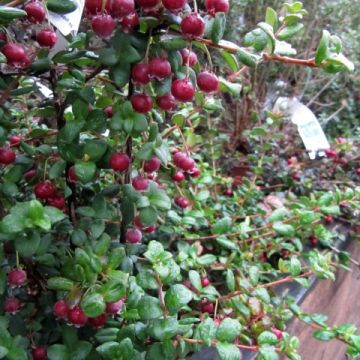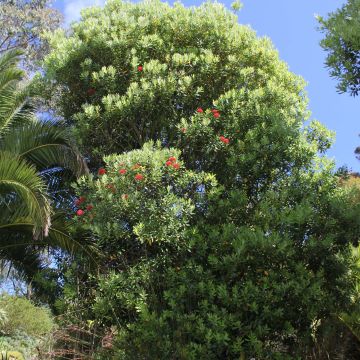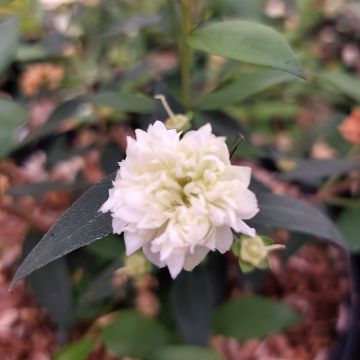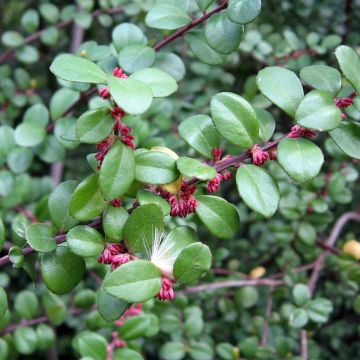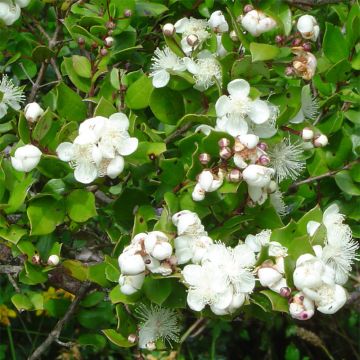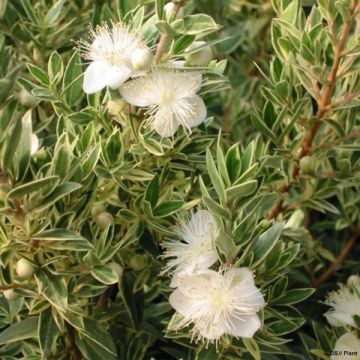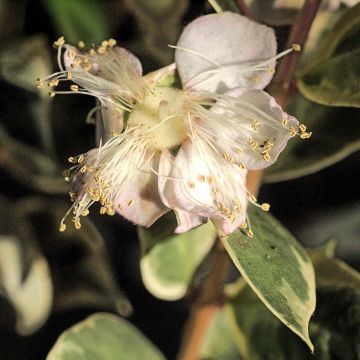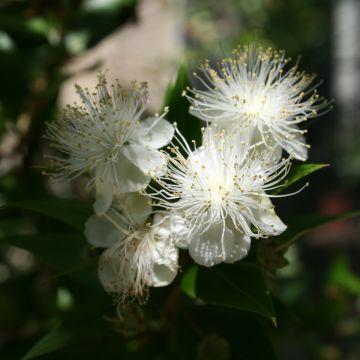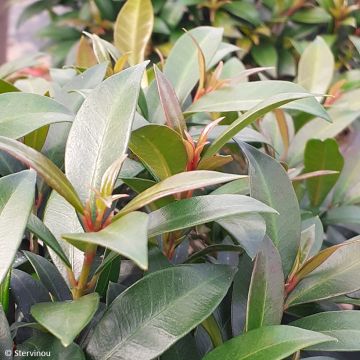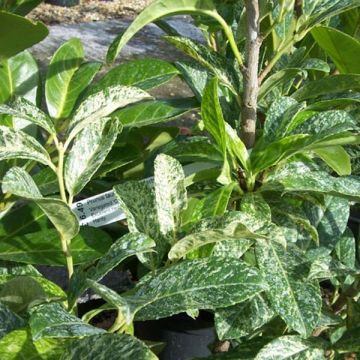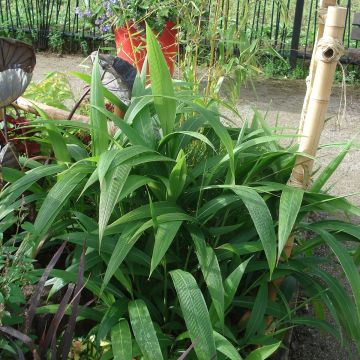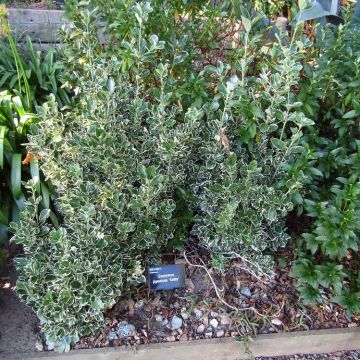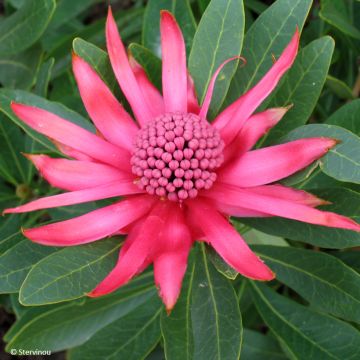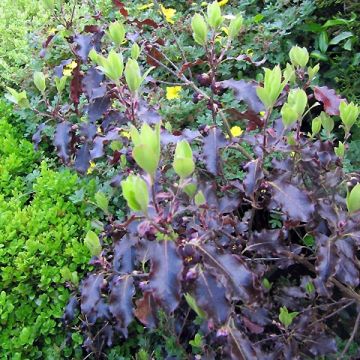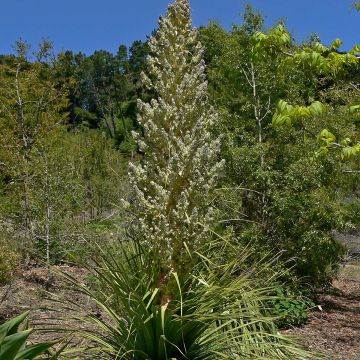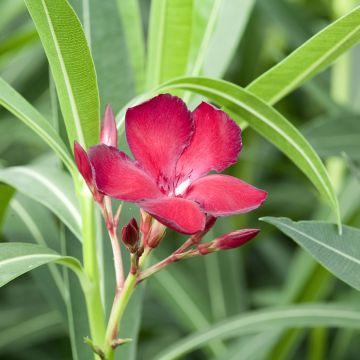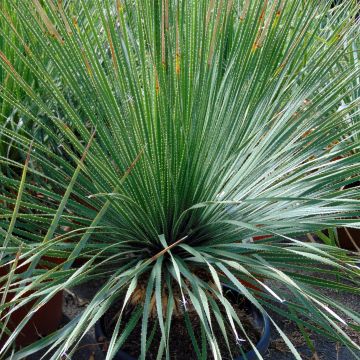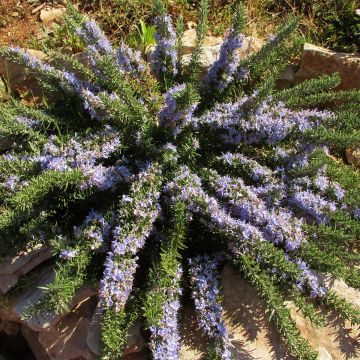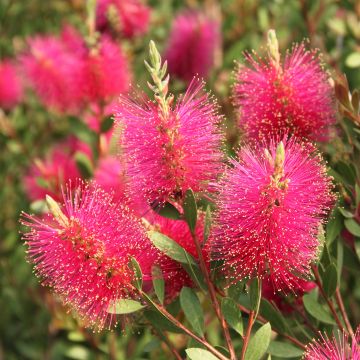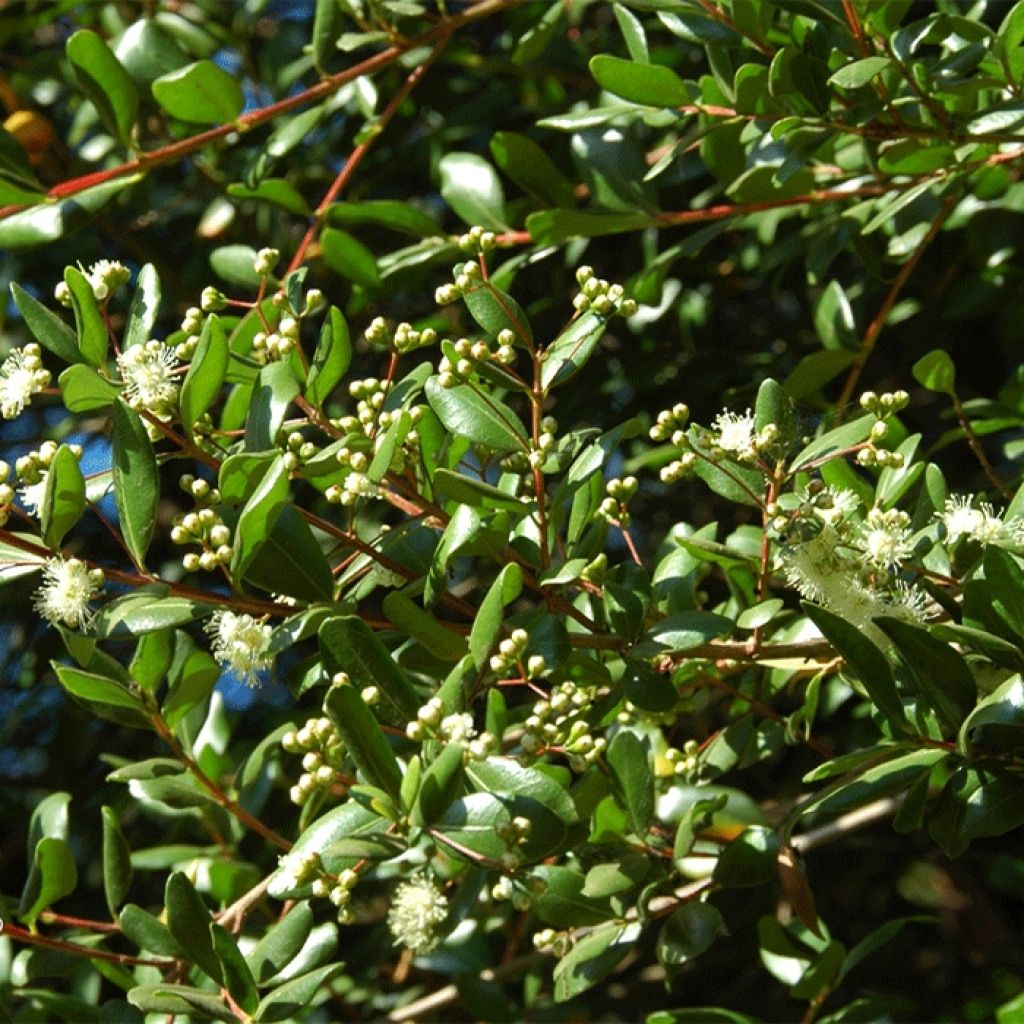

Temu divaricatum Heaven Scent - Blepharrocalix cruckshanksii
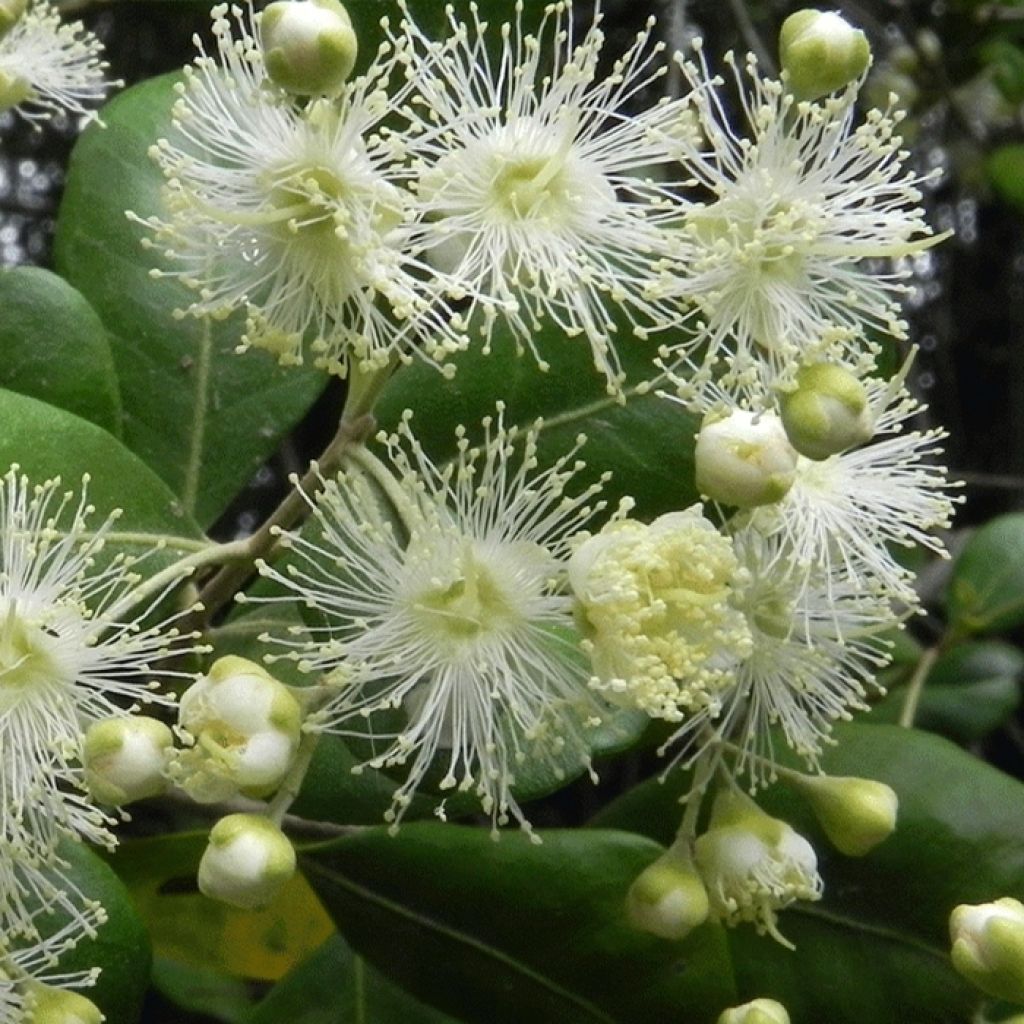

Temu divaricatum Heaven Scent - Blepharrocalix cruckshanksii
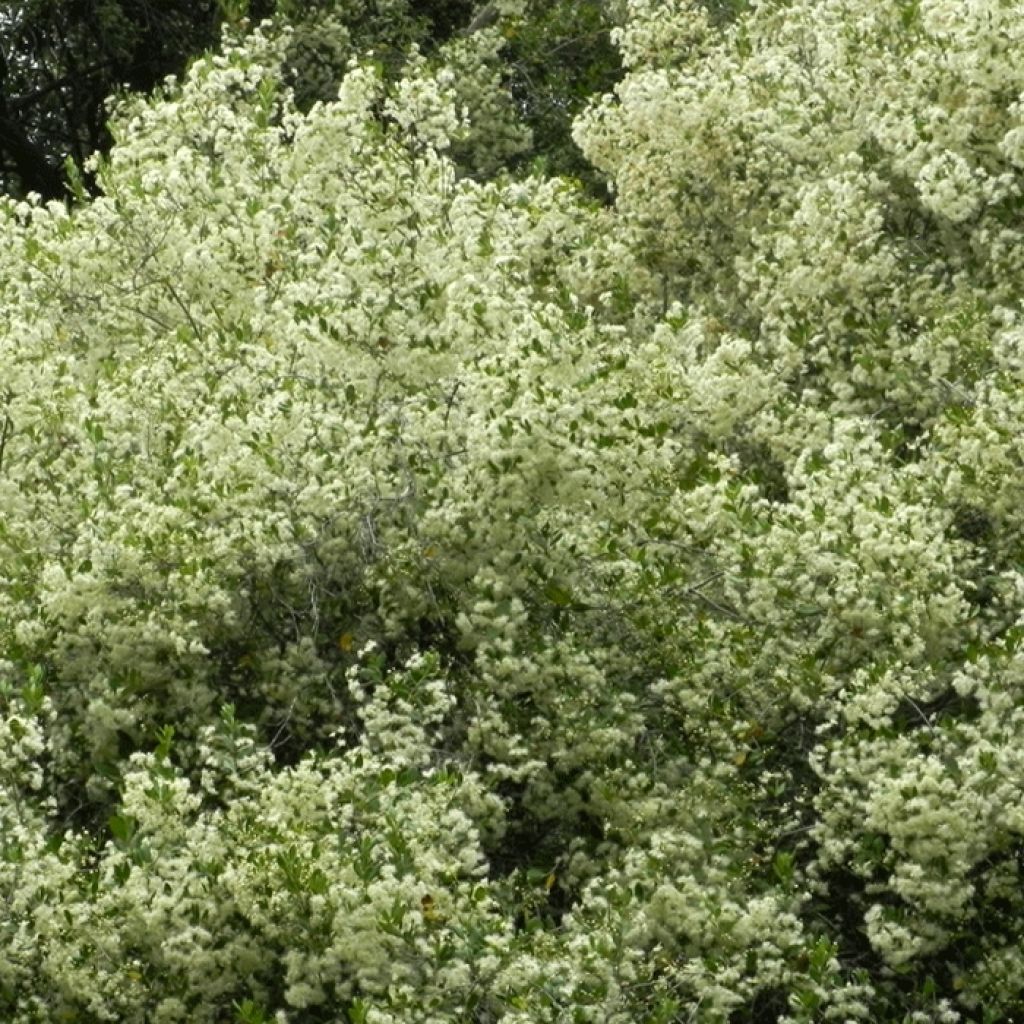

Temu divaricatum Heaven Scent - Blepharrocalix cruckshanksii
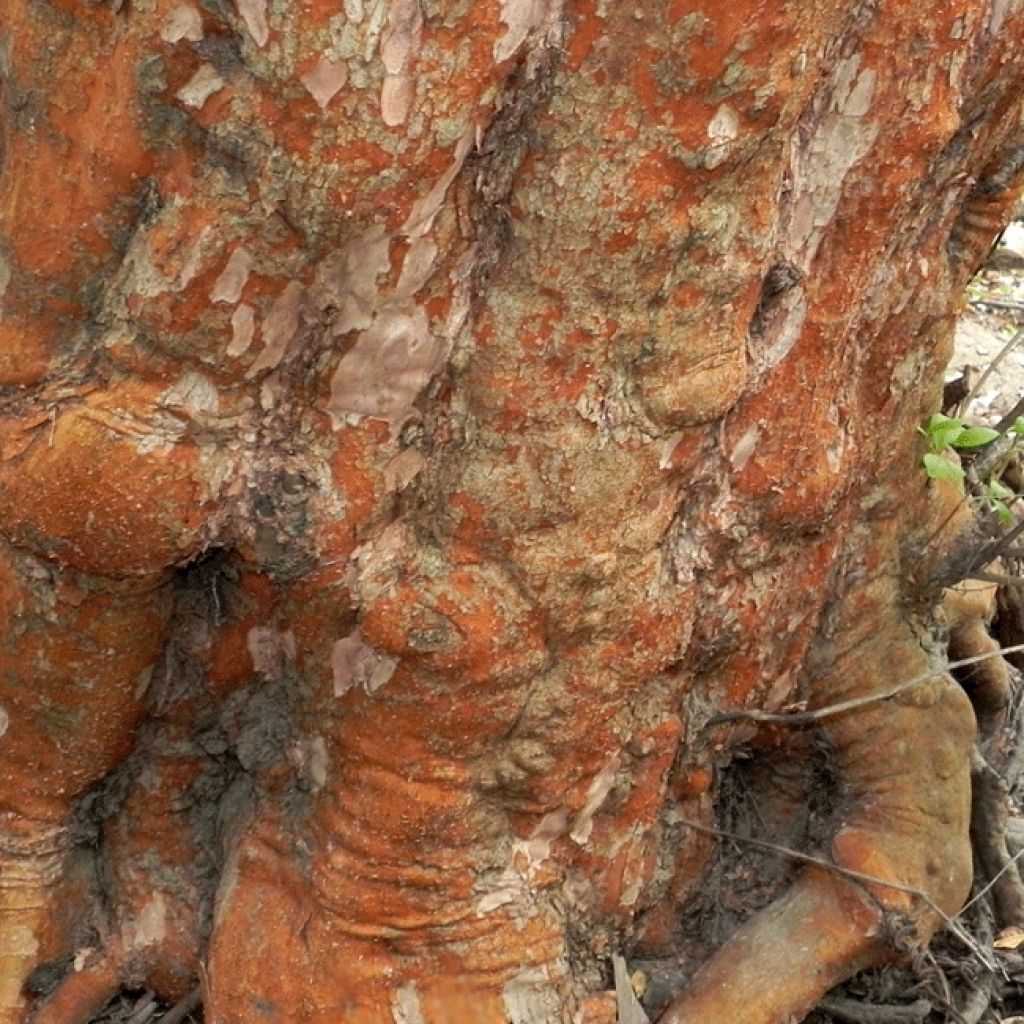

Temu divaricatum Heaven Scent - Blepharrocalix cruckshanksii
Temu divaricatum Heaven Scent
Temu divaricatum Heaven Scent
Temu
This plant carries a 24 months recovery warranty
More information
We guarantee the quality of our plants for a full growing cycle, and will replace at our expense any plant that fails to recover under normal climatic and planting conditions.
From €5.90 for pickup delivery and €6.90 for home delivery
Express home delivery from €8.90.
Does this plant fit my garden?
Set up your Plantfit profile →
Description
The Temu divaricatum 'Heaven Scent', now renamed Blepharrocalix cruckshanksii, is a Chilean bush from the myrtle family, not very hardy but with many ornamental qualities: the plant forms a large, dense bush, it has pretty, small, aromatic, evergreen leaves, displays a beautiful brick-coloured bark that peels over time and offers a lovely summer flowering with pleasantly scented white pompons. Preferring the moisture and mildness of oceanic climates to Mediterranean dryness, it makes a magnificent subject to be planted in a hedge or a shrub bed.
According to specialists, the Temu divaricatum 'Heaven Scent' is identical in every way to the wild species. It is also called Eugenia cruckshanksii or Luma cruckshanksii. It is a large bush native to Chile and Argentina belonging to the myrtle family. Reaching over 14 m (46ft) in height in its natural environment, it rarely exceeds 3.50 m (11ft) in height and 2 m (7ft) in width when grown in European climates, especially since it tolerates pruning perfectly. This plant is found in the wild on moist slopes and not far from watercourses, often in forests.
The Temu Heaven Scent has a fairly rapid growth. Its habit is naturally dense, ramified, and very bushy. Over the years, the bush can take the form of a small tree with a short trunk. The small, evergreen leaves, elliptical to oblong, leathery, measure 1.7 to 5.5 cm (1 to 2in) long and 0.8 to 3 cm (1in) wide. They are highly aromatic: when crushed, they release a scent of myrtle and orange. Their color is a shiny khaki green, then they turn red at the end of their life. The very nectar-rich bush flowers in the middle of summer, profusely from July to August.
The small, fragrant, white to pale yellow flowers have 5 petals and are 1 to 2 cm (1in) wide. They are clustered in groups of 3 to 15 units and open to reveal a large bouquet of prominent stamens. They appear in the axils of the leaves, on the new shoots, and are followed in autumn by the formation of small ovoid, fleshy, edible, and aromatic fruits, but with a bitter taste, initially red and then black when ripe. The remarkable bark is smooth and reddish-brown in color. It flakes off in small plates, revealing a smooth and fresh wood with a slightly greenish-gray shade.
Hardy to about -7°C, the Blepharrocalix cruckshanksii 'Heaven Scent' is a magnificent conservatory plant in cold climates and an excellent candidate for coastal gardens. In a greenhouse or conservatory, it will create an extremely decorative trio with an orange tree and a mimosa, evoking landscapes with exotic charm and fragrance. In mild climates, especially on the Atlantic coasts, it can be used as a standalone plant or in the back of a flower bed, even on the edge of a woodland. It can also be planted in an evergreen hedge, accompanied by a Luma chequen, an arbousier Marina, Leptospermum, or even red-flowering callistemons (Callistemon citrinus 'Splendens').
Report an error about the product description
Temu divaricatum Heaven Scent in pictures
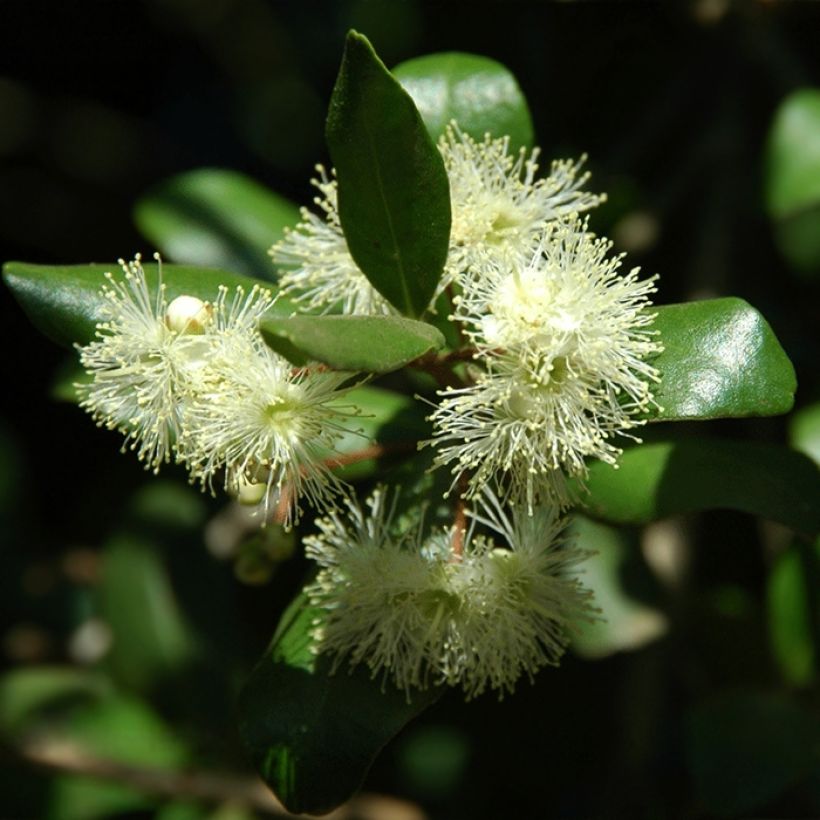

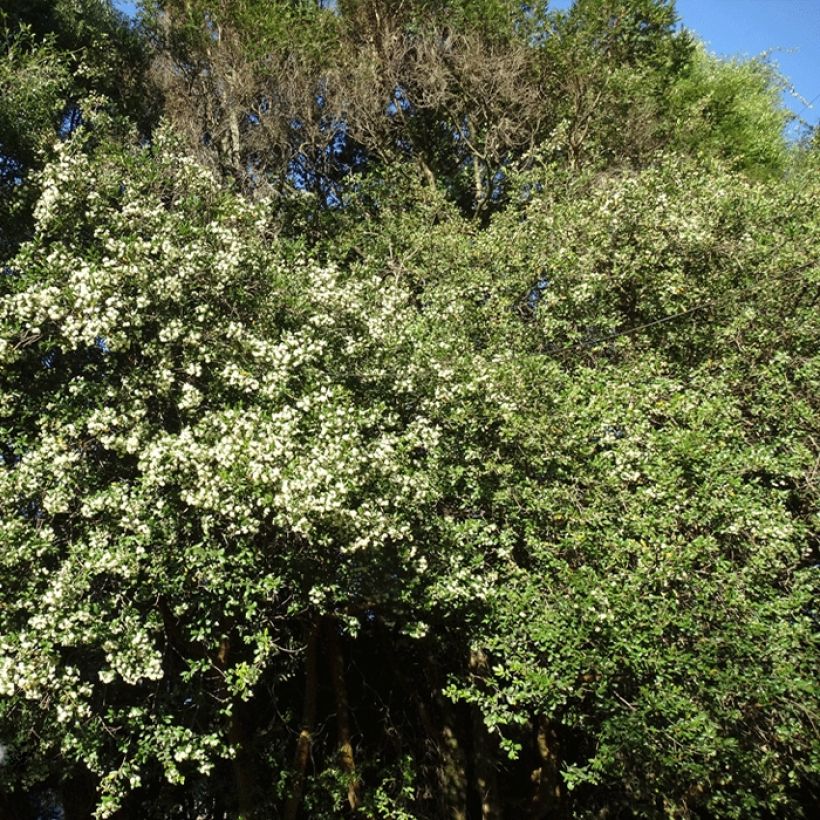

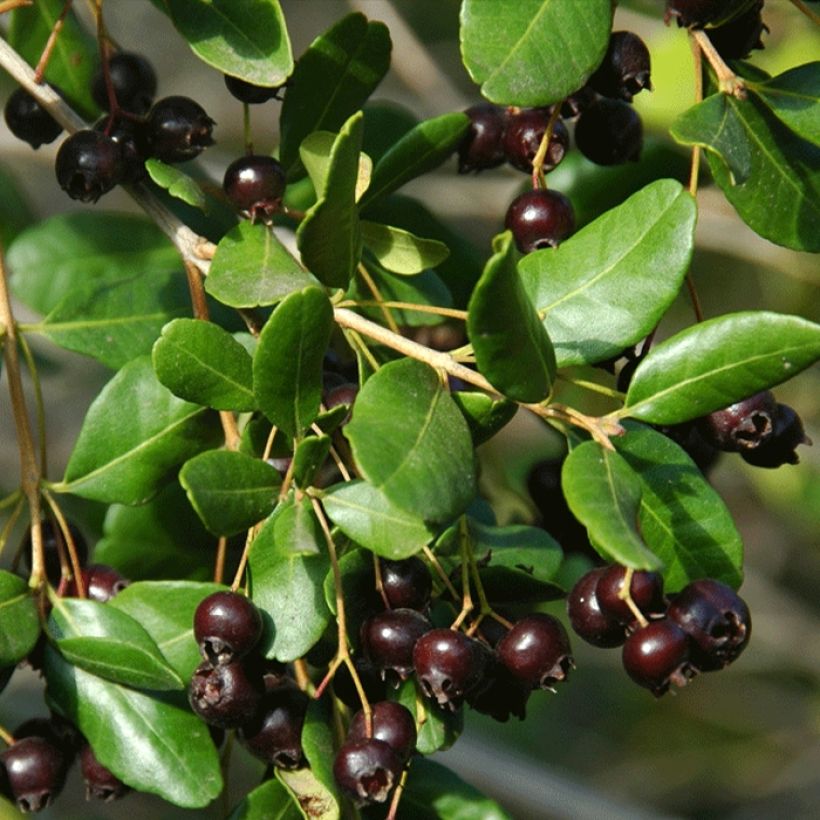

Plant habit
Flowering
Foliage
Botanical data
Temu
divaricatum
Heaven Scent
Myrtaceae
Temu
South America
Other Myrtus - Myrtle
Planting and care
Open ground cultivation:
The Temu 'Heaven Scent' will thrive in a light, well-drained, but moist soil, especially in summer. Loose soil, whether humus-rich, slightly rocky or sandy, slightly acidic, neutral or even alkaline, will do. It tolerates sea spray well. Plant it after the last frost, or in September-October in frost-free climates. It will flourish in full sun or partial shade. Under these conditions, it is hardy up to -7°C (19.4°F) when mature, and can live for many years. Surround it with winter protection in colder regions, insulate it from the cold as much as possible. Place it in the warmest corner of the garden, in full sun against a wall sheltered from strong winds. However, it will be necessary, in regions further away from the sea, to cultivate it in a large pot for winter storage, in a bright but unheated room. To shape it, you can prune the stems in March-April or after flowering to encourage branching.
Pot cultivation:
Provide good drainage in the bottom of the pot, which should be of large volume. Use a light substrate, enriched with leaf compost, and apply a little slow-release fertilizer in late winter and autumn. Water generously in summer, allowing the soil to dry out a little between waterings. The more you water, the more your bush will flower.
Planting period
Intended location
Care
This item has not been reviewed yet - be the first to leave a review about it.
Evergreen shrubs
Haven't found what you were looking for?
Hardiness is the lowest winter temperature a plant can endure without suffering serious damage or even dying. However, hardiness is affected by location (a sheltered area, such as a patio), protection (winter cover) and soil type (hardiness is improved by well-drained soil).

Photo Sharing Terms & Conditions
In order to encourage gardeners to interact and share their experiences, Promesse de fleurs offers various media enabling content to be uploaded onto its Site - in particular via the ‘Photo sharing’ module.
The User agrees to refrain from:
- Posting any content that is illegal, prejudicial, insulting, racist, inciteful to hatred, revisionist, contrary to public decency, that infringes on privacy or on the privacy rights of third parties, in particular the publicity rights of persons and goods, intellectual property rights, or the right to privacy.
- Submitting content on behalf of a third party;
- Impersonate the identity of a third party and/or publish any personal information about a third party;
In general, the User undertakes to refrain from any unethical behaviour.
All Content (in particular text, comments, files, images, photos, videos, creative works, etc.), which may be subject to property or intellectual property rights, image or other private rights, shall remain the property of the User, subject to the limited rights granted by the terms of the licence granted by Promesse de fleurs as stated below. Users are at liberty to publish or not to publish such Content on the Site, notably via the ‘Photo Sharing’ facility, and accept that this Content shall be made public and freely accessible, notably on the Internet.
Users further acknowledge, undertake to have ,and guarantee that they hold all necessary rights and permissions to publish such material on the Site, in particular with regard to the legislation in force pertaining to any privacy, property, intellectual property, image, or contractual rights, or rights of any other nature. By publishing such Content on the Site, Users acknowledge accepting full liability as publishers of the Content within the meaning of the law, and grant Promesse de fleurs, free of charge, an inclusive, worldwide licence for the said Content for the entire duration of its publication, including all reproduction, representation, up/downloading, displaying, performing, transmission, and storage rights.
Users also grant permission for their name to be linked to the Content and accept that this link may not always be made available.
By engaging in posting material, Users consent to their Content becoming automatically accessible on the Internet, in particular on other sites and/or blogs and/or web pages of the Promesse de fleurs site, including in particular social pages and the Promesse de fleurs catalogue.
Users may secure the removal of entrusted content free of charge by issuing a simple request via our contact form.
The flowering period indicated on our website applies to countries and regions located in USDA zone 8 (France, the United Kingdom, Ireland, the Netherlands, etc.)
It will vary according to where you live:
- In zones 9 to 10 (Italy, Spain, Greece, etc.), flowering will occur about 2 to 4 weeks earlier.
- In zones 6 to 7 (Germany, Poland, Slovenia, and lower mountainous regions), flowering will be delayed by 2 to 3 weeks.
- In zone 5 (Central Europe, Scandinavia), blooming will be delayed by 3 to 5 weeks.
In temperate climates, pruning of spring-flowering shrubs (forsythia, spireas, etc.) should be done just after flowering.
Pruning of summer-flowering shrubs (Indian Lilac, Perovskia, etc.) can be done in winter or spring.
In cold regions as well as with frost-sensitive plants, avoid pruning too early when severe frosts may still occur.
The planting period indicated on our website applies to countries and regions located in USDA zone 8 (France, United Kingdom, Ireland, Netherlands).
It will vary according to where you live:
- In Mediterranean zones (Marseille, Madrid, Milan, etc.), autumn and winter are the best planting periods.
- In continental zones (Strasbourg, Munich, Vienna, etc.), delay planting by 2 to 3 weeks in spring and bring it forward by 2 to 4 weeks in autumn.
- In mountainous regions (the Alps, Pyrenees, Carpathians, etc.), it is best to plant in late spring (May-June) or late summer (August-September).
The harvesting period indicated on our website applies to countries and regions in USDA zone 8 (France, England, Ireland, the Netherlands).
In colder areas (Scandinavia, Poland, Austria...) fruit and vegetable harvests are likely to be delayed by 3-4 weeks.
In warmer areas (Italy, Spain, Greece, etc.), harvesting will probably take place earlier, depending on weather conditions.
The sowing periods indicated on our website apply to countries and regions within USDA Zone 8 (France, UK, Ireland, Netherlands).
In colder areas (Scandinavia, Poland, Austria...), delay any outdoor sowing by 3-4 weeks, or sow under glass.
In warmer climes (Italy, Spain, Greece, etc.), bring outdoor sowing forward by a few weeks.

































